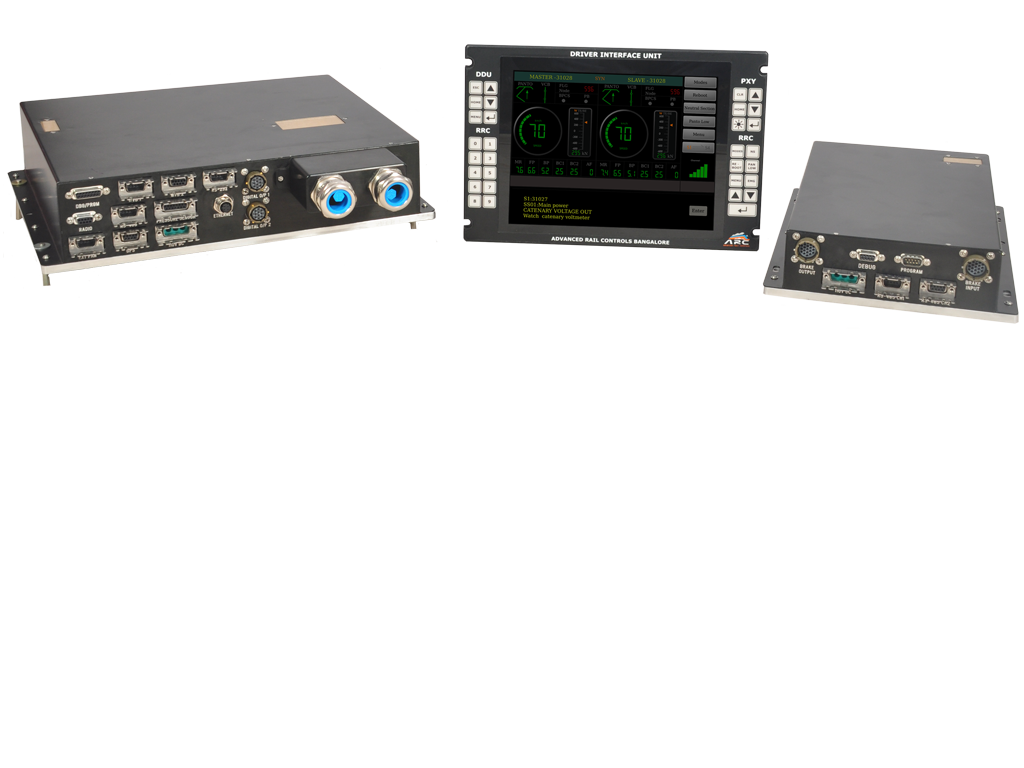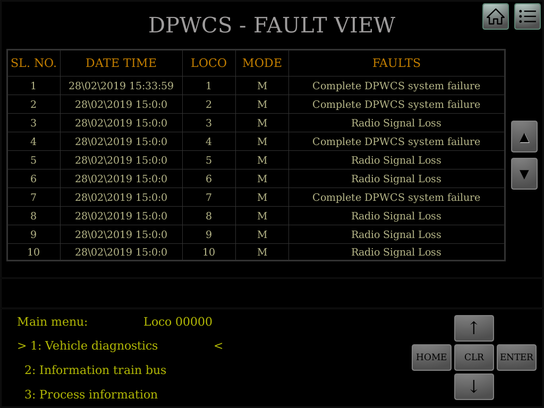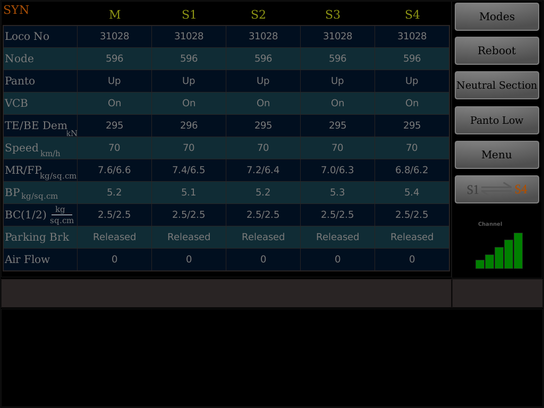DISTRIBUTED POWER WIRELESS CONTROL SYSTEM (DPWCS)
Distributed Power Wireless Control System was developed for Electric locomotives to provide Distributed Power Operation for achieving heavy haul. Using DPWCS, Distributed Power (DP) operation is possible through wireless. In DP operation, two or more locomotives are attached in a long train but dispersed at different locations. Alternatively, standard trains can be added one behind the other. The operation command of the train is achieved from the lead loco known as the Master using a single set of crew. Other locomotives are Slaves which receive command from the Master over Radio and Slave Locos do not normally have crew. The Slave locomotives which are distributed in a train, obeys the command from the master locomotive through radio signals. DP operation enables heavy haul and other benefits like increased throughput.
Key Features
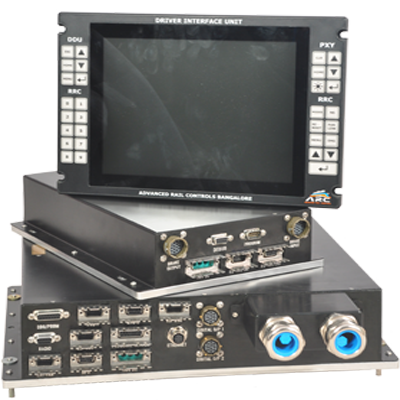
- Touch screen based 10.4" graphical display.
- Locomotives are dispersed at different points in a long train.
- Master load loco has crew, slaves do not have crew. Works on UHF frequency range.
- Works on UHF frequency range.
- Commands from master and acknowledgement from slaves to master sent over radio.
- Fully redundant system, single failure will not affect the operation.
- Safety features in case of radio signal loss to prevent accidents and safety checks during inauguration for train integrity check.
- Facility for driver authentication, wagon details and remote loco restart from the master loco.
- Neutral section negotiation through GPS and train length calculation methods.
- Special logic for panto lowering at restricted locations, display of faults in the slave loco in master cab and facility to acknowledge.
- IEC-60571 compliant.
Driver Interface Unit (DIU)
DIU is an interface between the driver and DPWCS. The DIU acts as terminal, simply to receive and display information from CCU (Control & Communication Unit) and send driver input to CCU. DIU has 800 x 600 resolution capacitive touchscreen along with keypad support for redundancy. It supports ESD/EMD MVB or serial 485 Communication.
Brake Interface Unit (BIU)
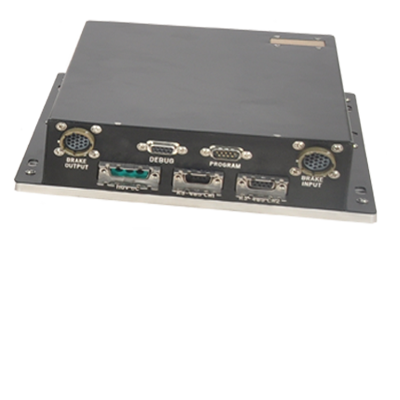
Brake Interface Unit is the unit that takes the Brake and pressure value as input in master mode and injects the master brake value in slave mode. There are two processor modules in the BIU viz. BRAKE MAIN and BRAKE SENTINAL. BRAKE_MAIN does all the controlling function where as the BRAKE SENTINAL monitors the brake status.
Radio Modem with Antenna
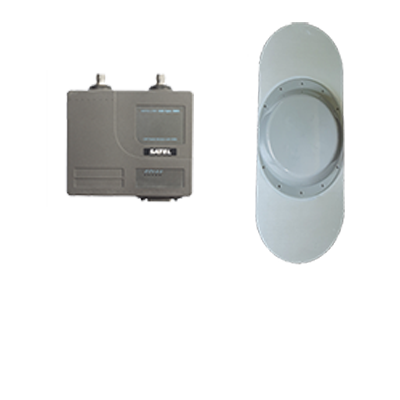
The radio modem is designed for transmitting data in the VHF and UHF bands. The radio modem uses 4-state FSK modulation providing for a maximum signalling rate of 21.68 kbit/s. It is of modular design with one to four standard RS232 ports. The configuration can be extended by an Ethernet interface and also by a module with analog and digital inputs/outputs. The power of the radio modem transmitter is digitally set in sixteen steps from 0.1 to 5 W.
Control & Communication Unit (CCU)

Control & Communication Unit is the heart of DPWCS. It takes all the commands and status information from Loco-Pilot (LP), Driver Interface Unit (DIU), Brake Interface Unit (BIU) and LOCO through MVB and 485 communication. It processes on the inputs data and transmit/receives depending on the operating modes (MASTER/SLAVE/MAIN/STANDBY).
DPWCS for Tap Changer Locomotives

DPWC's work on AC Tap Changer locomotives. DPWCS consists of three Units which are Driver Interface Unit (DIU) ,Control & Communication Unit (CCU),and Brake Interface Unit (BIU) .
Key Features :
- DIU has 800*600 resolution display with capacitor touch screen and DIU uses RS-485 protocol for Communication.
- CCU can read train line signal on 3 MU coupler wires (B, C &D).It has 4 IO boards, processor with network interface card and redundant power supply.
- BIU will interface with Pneumatic brake controls and have 4 CAN interface for external device communicationit.It is also designed for KAVACH systems.
How System Works


